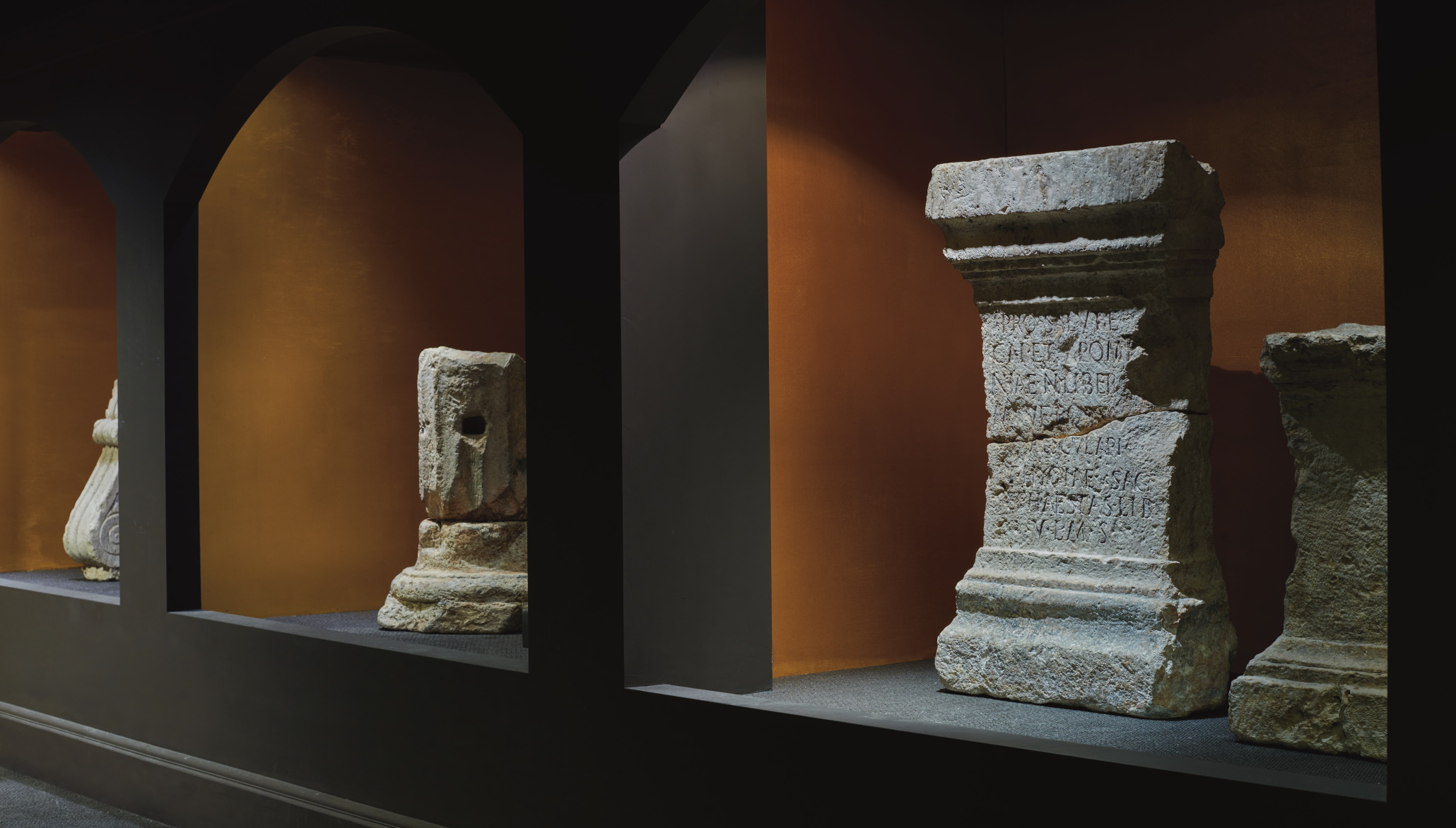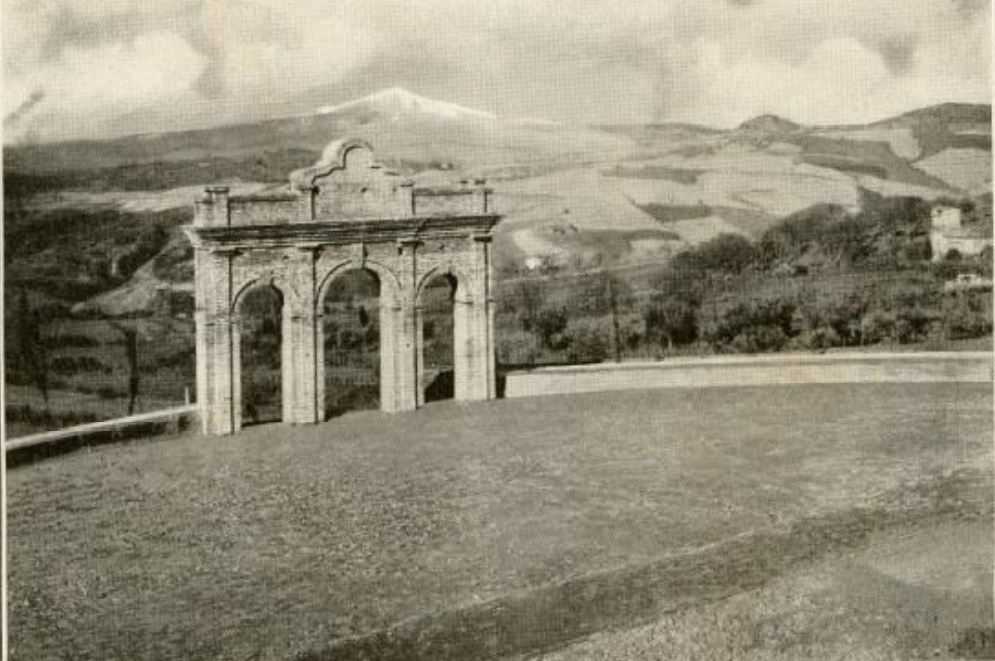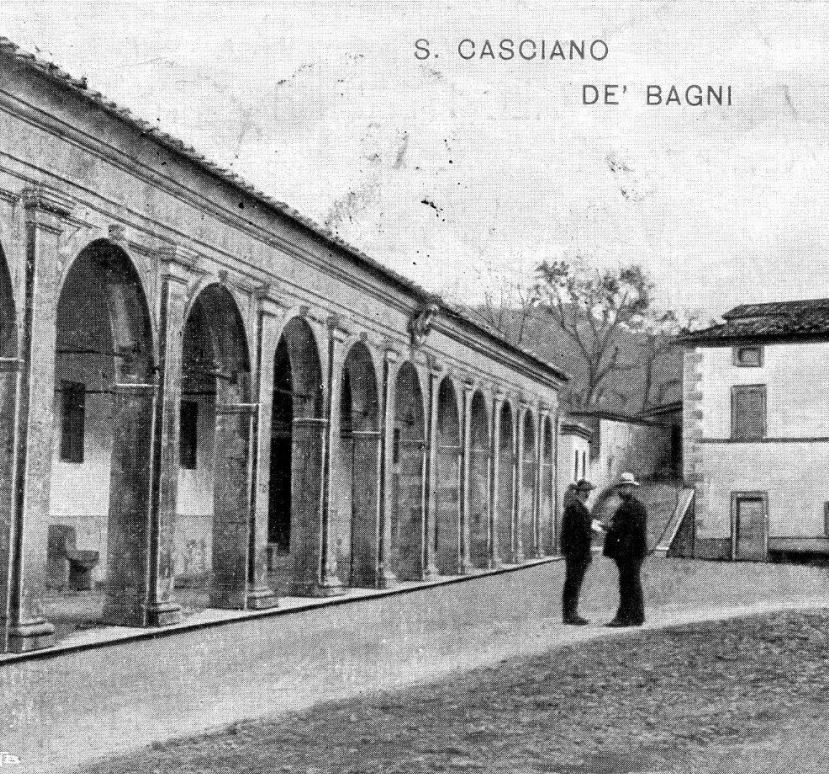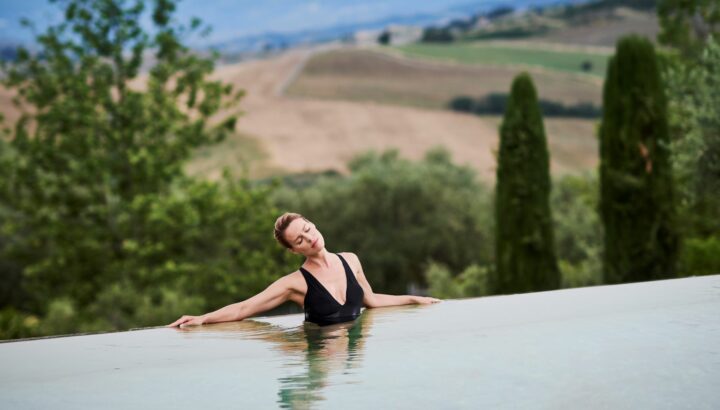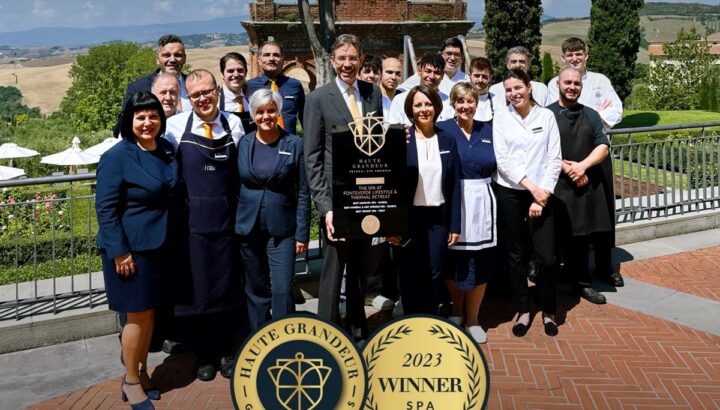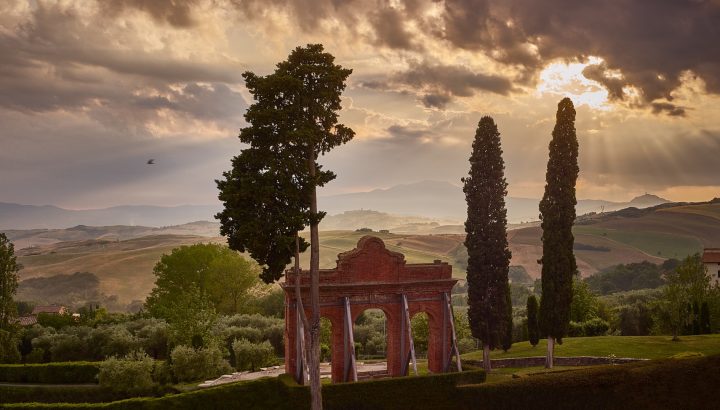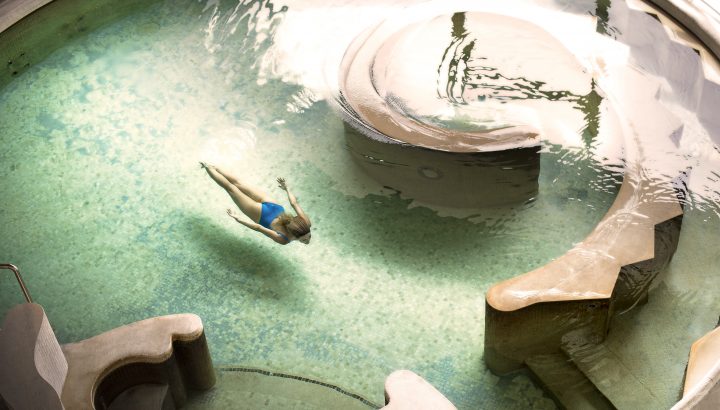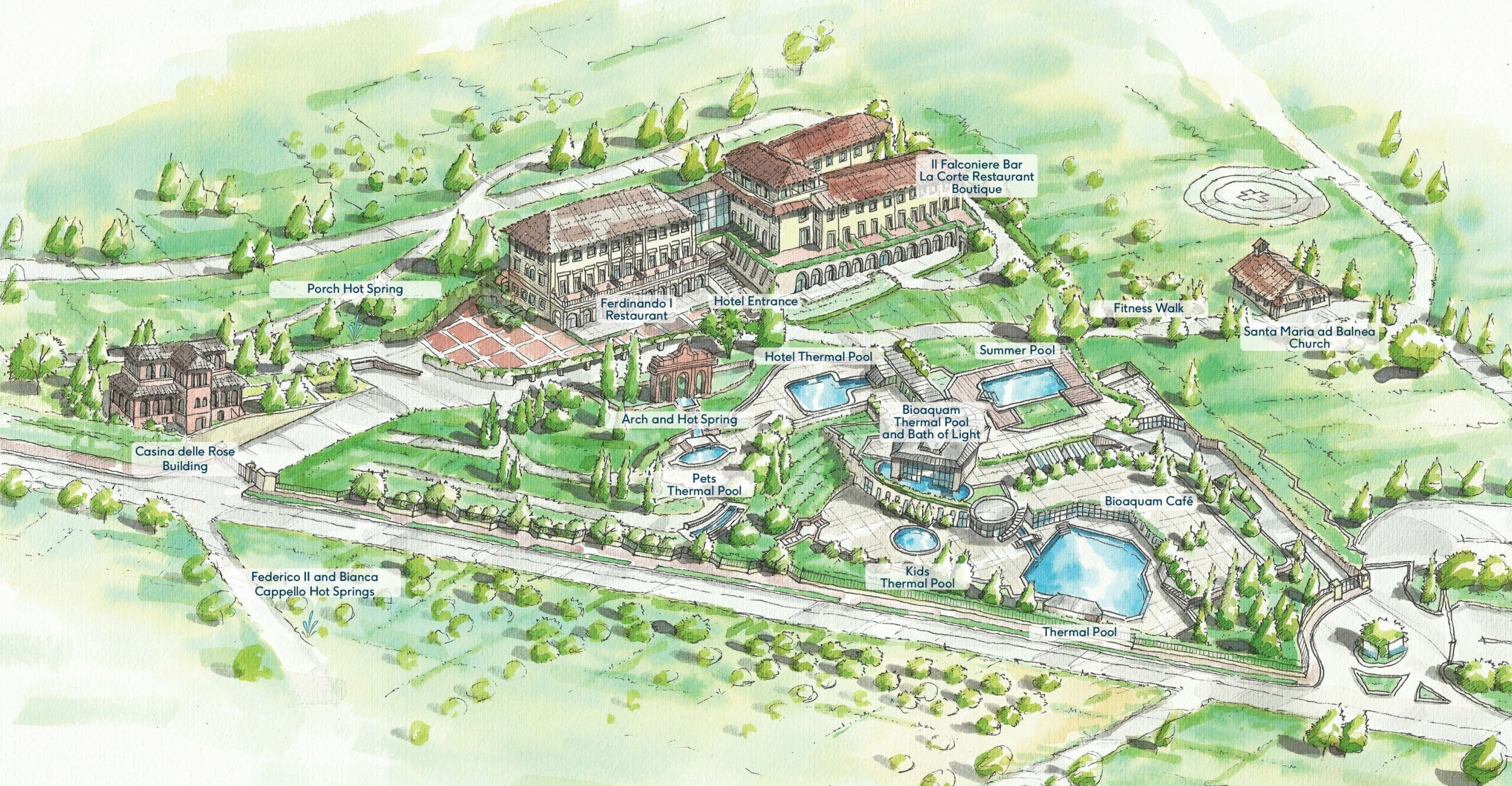Contact us for a personalised offer
Contact usBook your stay with us
Arrival
Departure
Rooms
Adults
Kids
Age First Child
Age Second Child
Age Third Child
Do you have a Special Code?
The resort of your dreams, amid the history and wellness of Tuscany
Fonteverde awaits you in front of San Casciano dei Bagni, a charming medieval village in the Sienese hills. Born from a Renaissance portico built in 1607 by the Grand Duke Ferdinando I de Medici, Fonteverde and its park are a true homage to the Renaissance.
Each detail is important in its shapes, materials and furnishings: everything seems to evoke the glories of the past, with all the comforts of today. On the breezy terraces, you can enjoy the unique landscape of the Val d’Orcia. You can breathe history and tradition from anywhere you are, in a wonderful natural setting. Even the palate finds satisfaction, with traditional flavours and generational recipes that have been handed down and reinterpreted with artistry and creativity.
Elegance has a great history
Style and elegance have thousands of years of history. Every detail of Fonteverde holds traces and echoes of a land that has influenced art all over the world.
-
The arch of the three naiads
When you enter the driveway of Fonteverde, the first thing that will catch your eye will likely be a triumphal arch. It stands alone in the gardens, between the building of the portico and the panorama of the valley. It is a triple arch, slender and powerful. It is made of red brick and appears as if it has been there forever. It is reminiscing of the arches of ancient Roman aqueducts and the shape of triumphal arches. It stands out on the landscape, and it is both the frame and viewpoint for observing the valley.
-
Birth of a resort
At the beginning of the twentieth century, there was only one thermal station. It was behind the portico, with its baths, showers, and treatment rooms. Next to it, there were a restaurant and some rooms. An ambitious project began in the 1930s, when the first hotel was built, followed by the House of Roses, the arch, the driveway, and the swimming pool.
-
A harmony made of small steps
Step by step, Fonteverde has developed into its current form. It is the harmonious sum of many interventions and transformations that have taken place over the years. What has guided these choices has always been the spirit of the location as well as the respect for the beauty of this territory. New pools were built overlooking the greenery, and the thermal baths are now a spa with a welcoming, elegant design. The tunnel that connects the hotel to the spa has become a fascinating path that exhibits the ancient artifacts found during construction, telling the story of millennia of spa culture.
-
Il tempio di Apollo
Le evidenze ritrovate non sono che una minima parte rispetto all’estensione documentata dell’area archeologica. Benché se ne fosse persa memoria nel corso degli ultimi tre secoli, esso
costituisce potenzialmente il principale sito archeologico termale della Toscana, se non dell’intero territorio nazionale.
Tra i molti materiali di pregio recuperati si distinguono i bronzetti votivi, ceramica di vario genere e marmi decorativi, tra cui una statuetta di figura femminile, identificata con la dea Igea. Gli elementi più significativi, però, provengono dal bordo del bacino centrale, su cui erano posizionati, tre altari (arae) in travertino locale, di cui due con iscrizione, rispettivamente a Fortuna Primigenia e Iside. Alle arae, in parte inclinate secondo la naturale pendenza assunta dalle strutture della vasca e trovate nella loro posizione originaria, va aggiunto un altro altare di dimensioni più piccole, ritrovato all’ingresso dell’edificio e recante una dedica completa ad Apollo.
Gli altari mostrano il ventaglio delle divinità cui doveva essere dedicato questo luogo di culto, tra cui Apollo, Esculapio, Igea, Iside e Fortuna Primigenia, in relazione con il potere curativo del
santuario e ci parlano anche delle persone che lo frequentavano. Fra la fine del II e gli inizi del III secolo d.C. il santuario, infatti, doveva essere entrato nella sfera di controllo o all’interno delle proprietà della famiglia senatoria degli Asinii, collegata agli Erucii e ai Pomponii, di cui 6 personaggi diversi vengono onorati qui: fra questi la matrona Pomponia Triaria, moglie di Caius Erucius Clarus (console nel 170 d.C.), oltre alla figlia Erucia Triaria e al marito il senatore Asinius Fabianus, e al fratello di Caius Iulius Erucius Clarus Vibianus, console nel 193 d.C., fatto uccidere da Settimio Severo nel 197 d.C.
Tutto l’edificio risulta così essere la monumentalizzazione della sorgente posta lì accanto, e di cui si raccoglievano le acque grazie alla vasca centrale. I contenuti delle dediche epigrafiche e i
ritrovamenti materiali hanno condotto all’interpretazione delle strutture come edificio santuariale, confermando la fortissima vocazione salutifera delle acque sancascianesi.
The archaeological finds of Fonteverde
